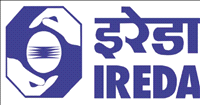The Insolvency and Bankruptcy Act, introduced by the government to ease the process of loan recovery for lenders, has disturbed the existing debtor-creditor equation and it is only natural that it is facing resistance, NS Vishwanathan, deputy governor of the Reserve Bank of India, said while delivering a speech at XLRI, Jamshedpur last week.

The earlier debtor-friendly environment made it possible for the defaulting debtors to secure moratoriums and force write-downs on debt repayment, while retaining management control over the borrowing units or thwart banks efforts to realise their dues by indulging in serial litigations, he said.
“The out-of-court restructuring mechanisms too suffered high failure rates resulting in the borrowing entities continuing to indulge in repeated defaults, being confident that the balance of power remained with them and the ability of banks to discipline errant borrowers was weak.
“The debtor friendly environment had its effect on banks’ business preference, while also partly contributing to the ever-increasing stressed assets in the banking system. Banks’ ability and/or willingness to lend to persons or entities that needed credit were hampered,” he added.
“When creditors know that they have weak rights resulting in a low recovery rate, they are averse to lend. Hence, lending in India is concentrated in a few large companies that have a low probability of failure. Further, secured credit dominates, as creditors' rights are partially present only in this case. Lenders have an emphasis on secured credit. In this case, credit analysis is relatively easy: It only requires taking a view on the market value of the collateral. As a consequence, credit analysis as a sophisticated analysis of the business prospects of a firm has shrivelled.”
He said In India, before the enactment of IBC, the Reserve Bank as banking regulator had to design resolution mechanisms that tried to emulate the desirable features of a bankruptcy law as identified in the literature. However, in the absence of a bankruptcy law in the country, those schemes could not result in meaningful resolution of the stressed loans. This resulted in significant mismatches between the book values of loans carried by banks and the inherent economic value of those loans. In this context, the enactment of the IBC is a watershed event, which has completely changed the legal framework governing the insolvency regime in the country. The enactment of IBC also enabled the Reserve Bank to come out with a revised framework for resolution of stressed assets. These initiatives by the Government of India and the Reserve Bank are being challenged by the defaulting borrowers in various judicial fora.
“…….we thought it necessary to deliver a detailed judgment so that all Courts and Tribunals may take notice of a paradigm shift in the law. Entrenched managements are no longer allowed to continue in management if they cannot pay their debts.”
In this context, it needs to be recognised that when banks take recourse to legal remedies available to them when a borrower defaults on his debt servicing, including that of security enforcement, they are essentially trying to recover the depositors’ money from a defaulting borrower, whatever be the reasons for default. However, the defaulting borrowers portray such an action by banks as a case of a ‘ruthless big bank’ taking over the assets of a ‘hapless borrower’. This is the kind of portrayal used even by the large corporates.
Here, one needs to distinguish between a private moneylender lending his own money for making a profit and a bank, which to a large extent uses depositors’ money (and tax payers’ money, in case of public sector banks). A correct portrayal of the situation would be: public interest (ie, depositors + taxpayers) vs borrowers’ interest, he said.
“Genuine” defaulters!
Viswanathan said one argument that is often repeated is that there are different reasons for default, and the regulations should treat them differently based on the reasons which lead to the default. The proponents of this line of thought argue that where the borrowers are affected by external factors beyond their control, they should be treated as “genuine” defaulters and some leniency in prudential norms is warranted. This is a fallacy, even though it is important to appreciate that some defaults are inevitable part of lending business.
He said the recognition of default or accounting for deterioration in the quality of asset should be independent of the reasons for such default or deterioration. Whereas, it is the resolution plan which should be a function of ability and willingness of the borrower to honour his obligations. Where a borrower has temporarily lost his ability to pay due to circumstances beyond his control, a quick and efficient restructuring of the debt either outside the courts or within the insolvency framework would be in order. In case of wilful or strategic defaulters, ie, borrowers with the ability but no willingness to pay up their debt, change in ownership accompanied by punitive action against the defaulting management is the way to go. Finally, if the business is beyond revival, faster liquidation would help in reallocation of resources to productive use. This is what the Revised Framework for Resolution of Stressed Assets seeks to achieve.














.jpg)
















